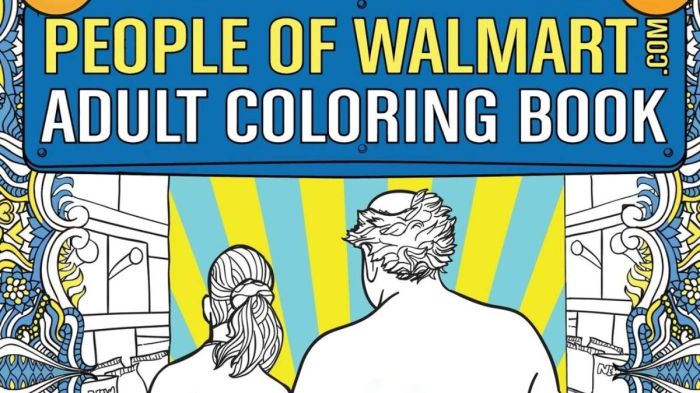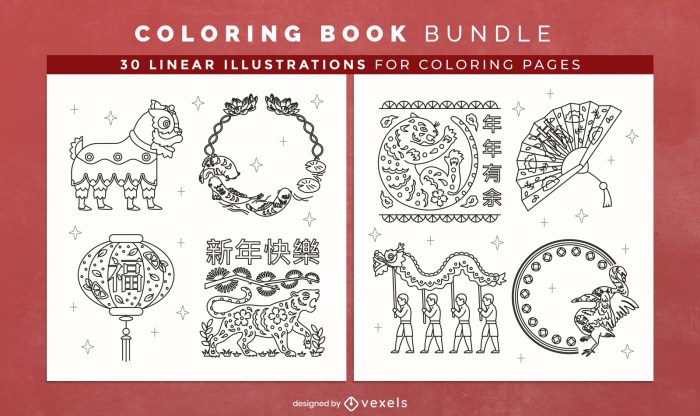Legal & Ethical Considerations: People Of Walmart Coloring Book

People of walmart coloring book – Creating a coloring book based on “People of Walmart” imagery presents significant legal and ethical challenges. The potential for infringement of privacy rights and the risk of perpetuating harmful stereotypes require careful consideration before proceeding with any such project. This section Artikels the key legal and ethical issues and proposes mitigation strategies.
Potential Legal Implications of Using “People of Walmart” Imagery
The use of photographs or videos of individuals from the “People of Walmart” phenomenon in a commercial product like a coloring book raises several potential legal issues. Primarily, there’s the risk of violating individuals’ rights of publicity. This right protects individuals from the unauthorized use of their name, likeness, or image for commercial purposes. If the coloring book features identifiable individuals without their consent, it could lead to lawsuits for damages.
Furthermore, depending on the specific content and portrayal, there might be grounds for claims of defamation or invasion of privacy if the images are used in a way that is embarrassing, humiliating, or otherwise harmful to the depicted individuals. Successful lawsuits could result in significant financial penalties and reputational damage for the creators and distributors of the coloring book.
The legal landscape surrounding these issues is complex and varies by jurisdiction, requiring thorough legal counsel before proceeding.
Ethical Considerations in Portraying Individuals
Three key ethical considerations arise from the portrayal of individuals in the “People of Walmart” coloring book. First, the potential for perpetuating harmful stereotypes is significant. The “People of Walmart” phenomenon often focuses on individuals who may be considered unconventional or eccentric, potentially leading to the reinforcement of negative stereotypes about certain demographics or social groups. Second, there’s the issue of informed consent.
Using images of people without their knowledge or consent is ethically questionable, even if legally permissible in some contexts. It raises concerns about respect for individual autonomy and the right to control one’s own image. Third, the potential for causing emotional distress or harm to individuals featured in the coloring book must be considered. Even if the images are not overtly malicious, they could be hurtful or embarrassing to those depicted, particularly if the coloring book is widely distributed and shared online.
Methods for Mitigating Legal and Ethical Risks, People of walmart coloring book
Three methods can help mitigate potential legal and ethical risks. First, obtaining informed consent from all individuals featured in the coloring book is crucial. This involves obtaining explicit permission from each person to use their image for commercial purposes, clearly outlining the intended use and ensuring they understand the implications. Second, altering the images to ensure anonymity is a vital step.
This could involve blurring faces, changing clothing, or altering other identifying features to make individuals unrecognizable. Third, consulting with legal counsel specializing in intellectual property and privacy law is highly recommended. Legal professionals can provide guidance on compliance with relevant laws and regulations, helping to minimize legal risks and ensure ethical practices throughout the project.
Production & Distribution

The creation and distribution of the “People of Walmart” coloring book involves a multifaceted process, encompassing design, printing, and marketing. Careful consideration of each stage ensures a high-quality product reaches its target audience efficiently and cost-effectively. The following details Artikel this process, from initial concept to final sale.
Step-by-Step Production Process
The production process begins with the design phase, where illustrations are created based on the “People of Walmart” theme. This involves sketching initial concepts, refining them digitally, and ensuring the final artwork is suitable for printing. Once the artwork is finalized, it is prepared for printing. This involves creating print-ready files, specifying color profiles, and choosing appropriate paper stock.
The next step is the actual printing process, which will be discussed in the following section. After printing, the books are bound, packaged, and prepared for distribution. Quality control checks are implemented throughout the entire process to ensure consistent quality.
Comparison of Printing Methods
Three common printing methods are offset printing, digital printing, and screen printing. Each method offers advantages and disadvantages regarding cost, quality, and environmental impact.
| Printing Method | Cost | Quality | Environmental Impact |
|---|---|---|---|
| Offset Printing | High initial setup cost, lower per-unit cost for large runs | High quality, sharp images, vibrant colors | Higher environmental impact due to ink and paper usage, but potentially lower per-unit impact for large runs |
| Digital Printing | Lower initial setup cost, higher per-unit cost for small runs | Good quality, suitable for smaller runs and personalized prints | Lower environmental impact per unit for smaller runs, but potentially higher overall for large runs due to energy consumption |
| Screen Printing | Relatively low cost per unit, particularly for simpler designs | Good quality for bold designs, but less detail than offset | Moderate environmental impact, depending on inks used and waste management |
Potential Distribution Channels
Three potential distribution channels for the coloring book include online marketplaces, retail partnerships, and direct-to-consumer sales.Online marketplaces such as Etsy or Amazon offer a wide reach to potential customers, requiring minimal upfront investment in physical retail space. Retail partnerships involve collaborating with stores, such as bookstores or novelty shops, to sell the coloring book through their existing distribution networks.
This provides access to a physical customer base but requires negotiating agreements and potentially paying wholesale prices. Direct-to-consumer sales, achieved through a dedicated website or social media channels, offer greater control over branding and pricing but require a stronger marketing strategy to reach customers. Each channel presents different advantages and disadvantages regarding reach, cost, and control.
The quirky humor of “People of Walmart” coloring books offers a unique creative outlet. If you’re looking for more options, consider exploring a wider range of subjects by checking out some fantastic free online coloring books ; they offer a vast library of designs. Returning to the “People of Walmart” theme, the unexpected nature of the characters makes for entertaining and memorable coloring pages.


